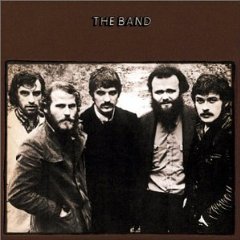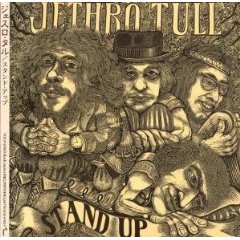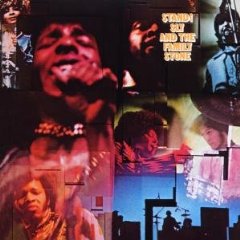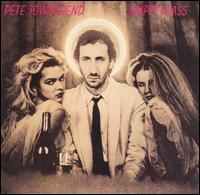The Best of ’60s Blues-Rock

In early August, 1969, there was quite a buzz about Woodstock. I don’t believe anyone, even at that late date, anticipated how big it was going to be. At least not among my friends.
Most of us were not planning on a trip to upstate New York though. On Sunday the 17th during the festival weekend, a concert was scheduled at the original Oakdale Music Theatre, with its theatre-in-the-round stage, in Wallingford, Conn., that was not to be missed, Led Zeppelin.
We’d seen Cream there the previous summer and myriad other mid-to-late ’60s acts: The Paul Butterfield Blues Band, Lovin’ Spoonful, Ray Charles. Shows I didn’t get to see included The Who, The Doors and Chicago. One of my bands, The Bram Rigg Set opened for The Dave Clark Five in late summer, 1967. It was an almost-perfect venue to get an up-close look at performers. Seating was perhaps no more than about 2,000, the closest within about 15 to 20 feet of the musicians, sometimes even closer when they came to the edge of stage, which was only a few feet off the ground.
Zeppelin’s first album was released in early 1969 and it made quite an impact. Surprising really. Jimmy Page was well known and I’d seen him with the last version of The Yardbirds in 1967 at the Village Theater in New York. But Robert Plant, John Paul Jones, John Bonham, where did they come from? Continue reading Concerts Vol. 14: Led Zeppelin
It couldn’t have been more than two hours after writing Woodstock revisited and stating it was unlikely I would be purchasing the latest re-release of the rock festival that I walked into Costco and found a copy of the 40th anniversary Ultimate Collector’s Edition at a price I wasn’t expecting. So low, that is. Of course, I picked it up and bought it.
 My main interest was not in the Director’s Cut, which I had bought back in the early ’90s, but in the Extras disc, Woodstock: Untold Stories. It includes about three hours of material with nearly 150 minutes of previously unreleased performances, the rest consisting of documentary video segments.
My main interest was not in the Director’s Cut, which I had bought back in the early ’90s, but in the Extras disc, Woodstock: Untold Stories. It includes about three hours of material with nearly 150 minutes of previously unreleased performances, the rest consisting of documentary video segments.
The inclusion of the Paul Butterfield Blues Band was the main attraction for me, despite the band performing only one song, but the disc also includes The Who, Jefferson Airplane, Santana, Joe Cocker and first-time appearances on a Woodstock disc by Johnny Winter and Creedence Clearwater Rivival.
The viewer will have to sit through a somewhat painful first half of the disc though to get to the good bits. That may affect your decision on buying the set at all. You can skip over most of that of course, but it does reduce the portion of the footage that will draw you back for repeated viewings. Continue reading Woodstock Extras
If you haven’t noticed the Woodstock blitz is on. The 40th anniversary of the most famous rock festival in history is being celebrated with a number of new releases on CD, DVD and Blu-Ray.
 The only question left is whether Michael Lang, who produced the original festival, will stage anniversary events in August. There were reports earlier this year about free concerts in upstate New York and Berlin, Germany, but nothing is confirmed.
The only question left is whether Michael Lang, who produced the original festival, will stage anniversary events in August. There were reports earlier this year about free concerts in upstate New York and Berlin, Germany, but nothing is confirmed.
The video of the festival has been re-released by Warner Brothers in at least three versions, a two-disc Special Edition, and a three-disc Ultimate Collector’s Edition on DVD and Blu-Ray. It comes in a funky fringed box and features a 225-minute Director’s Cut and an additional three hours of bonus material and previously unreleased performances by artists such as Creedence Clearwater Revival, Santana, The Who, The Dead and The Paul Butterfield Blues Band, among many others.
Despite all this, there are still performances that won’t be included, most notably The Band. But others such as Creedence and Mountain will be making their first appearance. Blu-Ray will set you back about $60, while DVD can be had for $42. You can find a list of the 18 bonus performances here. Continue reading Woodstock revisited
When I think of 1969, I think the end of the hippie dream, the fading of peace and love. After the violence of the Democratic convention in ’68, it appeared the Yippies were taking precedence over the original anti-war movement that so many of us bought into when we were at college.
 Despite the triumph of Woodstock, the year ended on the foreboding trajedy of Altamont. It was the year the Beatles said farewell, another dream that was ending. So when I think about 1969, I don’t necessarily think of great albums first. But as Mojo Magazine points out in a recent special edition with a piece aptly titled 69 from 1969, which we acknowledge with the headline above, there was a motherlode of great music released in 1969. The music was changing and the early ’70s gave us another wave of great music as well with the dawn of the singer-songwriter era. But the decade’s last year included an impressive list of offerings.
Despite the triumph of Woodstock, the year ended on the foreboding trajedy of Altamont. It was the year the Beatles said farewell, another dream that was ending. So when I think about 1969, I don’t necessarily think of great albums first. But as Mojo Magazine points out in a recent special edition with a piece aptly titled 69 from 1969, which we acknowledge with the headline above, there was a motherlode of great music released in 1969. The music was changing and the early ’70s gave us another wave of great music as well with the dawn of the singer-songwriter era. But the decade’s last year included an impressive list of offerings.
You can find music just as good or better from any year in the ’60s. But since it’s 40 years on for this watershed year, we have a poll below in which you can vote. To refresh your memory, here are some of the highlights in no particular order:
 The Band, The Band: Their second release and perhaps my favorite, along with Stage Fright, filled with songs that make up one of the foundations of today’s Americana movement.
The Band, The Band: Their second release and perhaps my favorite, along with Stage Fright, filled with songs that make up one of the foundations of today’s Americana movement.
Everybody Knows This Is Nowhere, Neil Young: His second, and although I for one liked the weak-selling debut, this unquestionably has several of his standards.
Led Zeppelin I, Led Zeppelin: Some prefer the second, released in late 1969, but this really had the bigger impact as far as influencing the music scene. It was hard rock, but quite different in some ways than anything before.
Stand Up, Jethro Tull: Arguably their best, predating the more progressive leanings of the band.
 A Salty Dog, Procol Harum: Speaking of prog, but really is it? Using classical ideas and instrumentation in a tasteful combination is more like it.
A Salty Dog, Procol Harum: Speaking of prog, but really is it? Using classical ideas and instrumentation in a tasteful combination is more like it.
The Gilded Palace Of Sin, The Flying Burrito Brothers: Gene Clark, the Byrds and others had recorded tracks and some nearly full albums of what was to be called country rock, but Gram Parsons’ first project as a leader really set the stage for the Eagles and those who followed.
Tommy, the Who: Many cite other Who albums as superior to this and that’s probably true, but none had a bigger influence in the grand scheme of things.
Stand, Sly & the Family Stone: This is loaded with classic Sly songs, Everyday People, I Want To Take You Higher, Sing A Simple Song, You Can Make It If You Try.
Crosby, Stills & Nash, Crosby, Stills & Nash: Deja Vu had some better songs on it, but as a trio this was their highlight.
Dusty In Memphis, Dusty Springfield: A peak from a remarkably consistent vocalist, career defining.
Blind Faith, Blind Faith: The one-off, with about 15 minutes of filler, still holds up as a solid outing with at least a couple of rock ‘n roll classics.
Abbey Road, the Beatles: A fitting sendoff, which was recorded after but released before their official swan song, Let It Be.
In A Silent Way, Miles Davis: I preferred the first real experiment into fusion, Miles In The Sky (1967), but there is no doubting the impact of this outing.
Clouds, Joni Mitchell: I always think of this as coming out earlier than 1969, but her career didn’t take off in earnest as a solo performer until the ’70s with Blue and For The Roses.
Then Play On, Fleetwood Mac: The last gasp of the original Mac with Peter Green. It may have been the last but it has some wonderful blues romps, including Oh Well.
Let It Bleed, the Rolling Stones: Their decided shift back to blues-influenced rock on Beggar’s Banquet is followed by incorporating country blues into the mix. One of their last great ones.
There are many others, the Allman Brothers’ debut; Fairport Convention’s Liege & Lief, not as well known in the States as the U.K., where it is a folk-rock staple; Santana’s and Chicago’s first. The list goes on.
What do you think? Vote for the best album of 1969.
This article is also available over at BabyBoom Review at this link.
I’ve been listening to a remastered version of Pete Townshend’s Empty Glass the past couple of days. I still have this album on vinyl but just picked it up on CD. It’s not a new reissue; it’s been around since 2006. But Townshend’s second solo effort from 1980 and probably his best is worth a listen.
 Containing two of his most familiar tracks, Rough Boys and Let My Love Open The Door, both successful singles, the album is more pop-rock oriented than anything in his repertoire since the early days of the Who. But there is more than those signature tunes.
Containing two of his most familiar tracks, Rough Boys and Let My Love Open The Door, both successful singles, the album is more pop-rock oriented than anything in his repertoire since the early days of the Who. But there is more than those signature tunes.
Jools And Jim and Cat’s In The Cradle join Rough Boys as the album’s hardest rocking tracks, while I Am An Animal and And I Moved are emblematic of the rest of the album’s more pop sensitivities, featuring Townshend’s capable yet fragile vocals. He often contrasts his hardest, grinding songs with softer, floating sections similar to Who compositions.
The record is somewhat reminiscent of Todd Rundgren, who Townshend appears to appreciate, not similar in song composition or production but in Townshend’s instrumental contributions, which dominate the album with limited help from other musicians. It also has that pop flavor that Rundgren’s best efforts possess and a commitment to melody, the essence of all of Townshend’s song writing.
Interesting that it was apparently created during a particularly dark period for Townshend, in the wake of Keith Moon’s death and his own heavy reliance on alcohol.